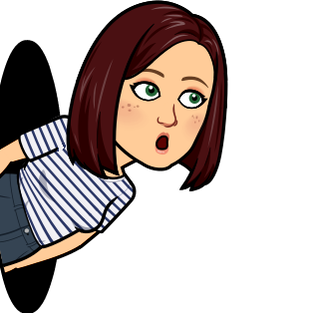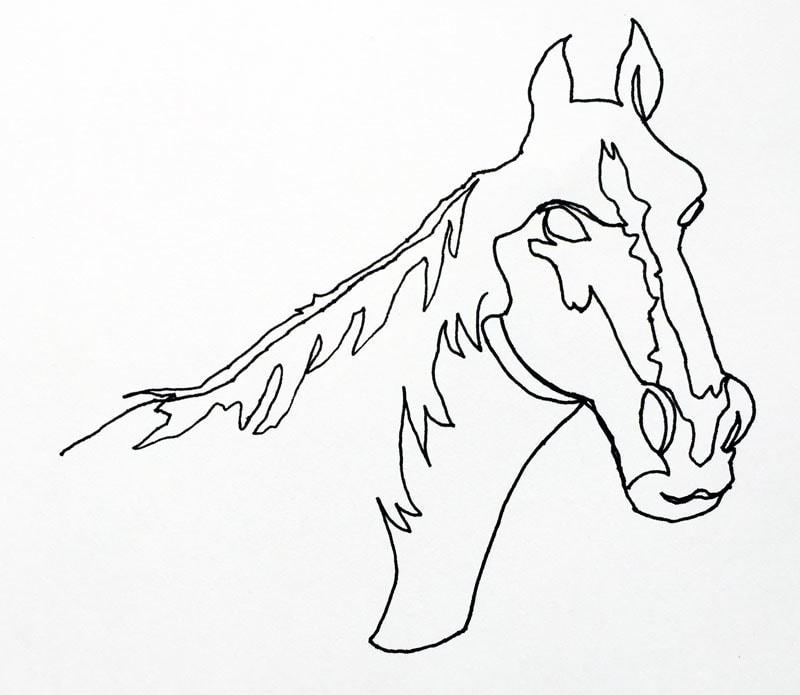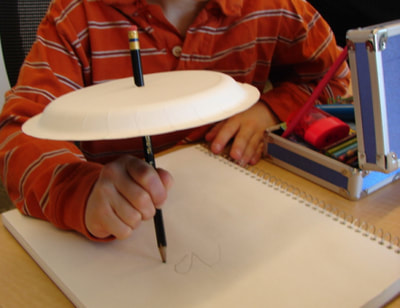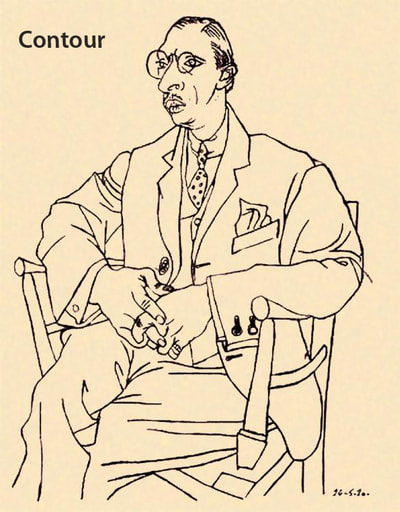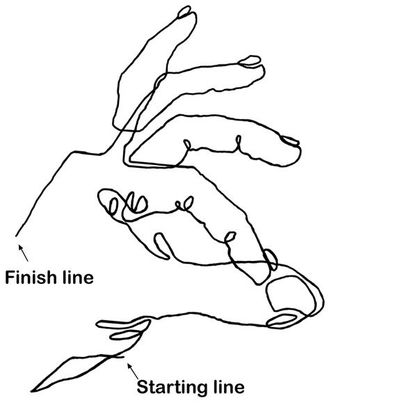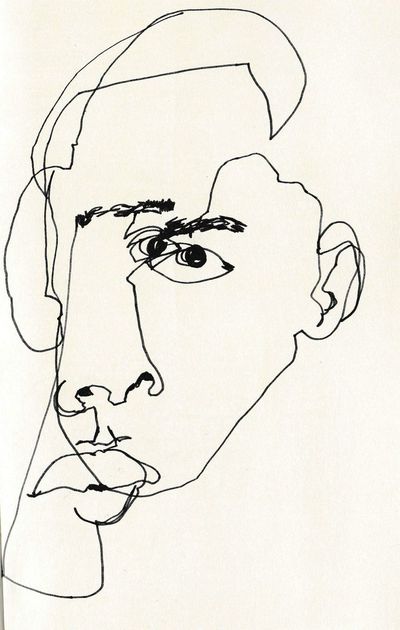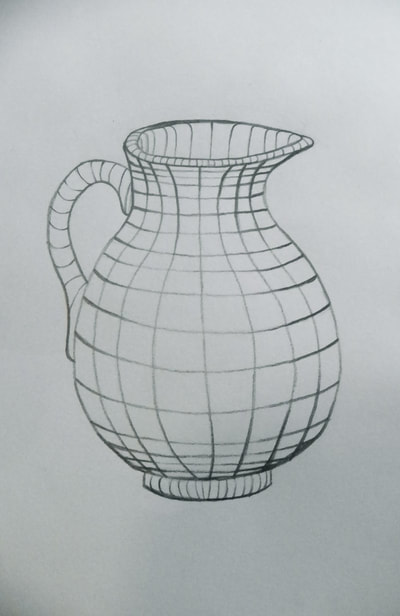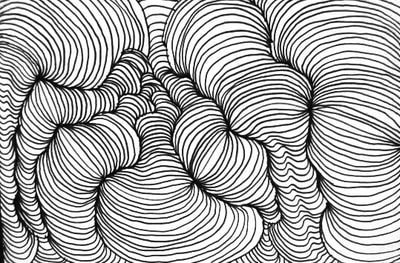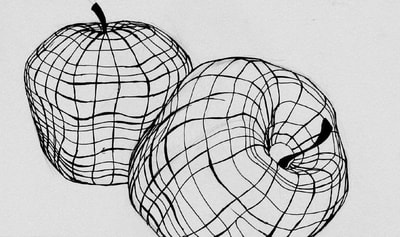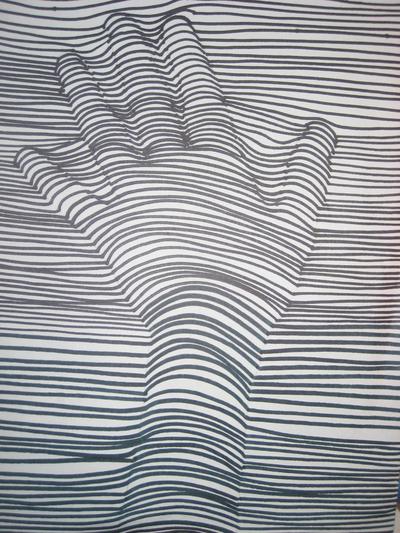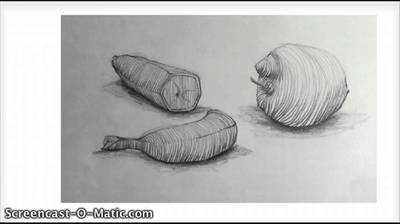Continuous Drawing
What?
A continuous line drawing is one in which a single, unbroken line is used to develop the image. Although mostly created as an exercise, many continuous line drawings can stand on their own as finished works of art.
As an exercise, continuous line drawing forces the artist to closely observe the perceived lines of the subject. While focused mostly on describing the contours, shadows and form can also be communicated depending on the approach taken.
Why?
Aside from the fact that a continuous line drawing can be a work of art in its own right, it is also a worthy drawing exercise for developing hand-eye coordination and observation skills. As artists, we need to spend a bit of time in practice to further develop our drawing skills.
Simple line drawings such as these can be created in any environment and do not require a hefty time investment. A sketchbook could be filled with them in a matter of days. Most drawings only require a few minutes to benefit from the exercise.
Any mark-making tool can be used, but pens, markers, and graphite pencils are most commonly used.
A continuous line drawing is one in which a single, unbroken line is used to develop the image. Although mostly created as an exercise, many continuous line drawings can stand on their own as finished works of art.
As an exercise, continuous line drawing forces the artist to closely observe the perceived lines of the subject. While focused mostly on describing the contours, shadows and form can also be communicated depending on the approach taken.
Why?
Aside from the fact that a continuous line drawing can be a work of art in its own right, it is also a worthy drawing exercise for developing hand-eye coordination and observation skills. As artists, we need to spend a bit of time in practice to further develop our drawing skills.
Simple line drawings such as these can be created in any environment and do not require a hefty time investment. A sketchbook could be filled with them in a matter of days. Most drawings only require a few minutes to benefit from the exercise.
Any mark-making tool can be used, but pens, markers, and graphite pencils are most commonly used.
Contour drawing
What?
Contour drawing, is an artistic technique in which the artist sketches the contour of a subject by drawing lines that result in a drawing that is essentially an outline; the French word contour meaning, “outline.”
Contour drawing, is an artistic technique in which the artist sketches the contour of a subject by drawing lines that result in a drawing that is essentially an outline; the French word contour meaning, “outline.”
Why?
Contour drawing helps train the brain to coordinate the drawing hand and the eye. You are supposed to look at a point on the contour and imagine that your pencil is on that point. Right brain work because the pencil is touching the paper. Then as you move your eye along the contour you move the pencil along the contour. Again right brain work because the pencil is still on the paper.
So as you practice this simple exercise you will notice the pure contour drawings begin to resemble what you were drawing instead of a mass of squiggles.
It is a great practice for beginner artists. Imagine it like being involved with a sport; you must practice skills and build endurance for a competition. Your contour drawings are like the practicing of skills and the final drawing is the competition.
Contour drawing helps train the brain to coordinate the drawing hand and the eye. You are supposed to look at a point on the contour and imagine that your pencil is on that point. Right brain work because the pencil is touching the paper. Then as you move your eye along the contour you move the pencil along the contour. Again right brain work because the pencil is still on the paper.
So as you practice this simple exercise you will notice the pure contour drawings begin to resemble what you were drawing instead of a mass of squiggles.
It is a great practice for beginner artists. Imagine it like being involved with a sport; you must practice skills and build endurance for a competition. Your contour drawings are like the practicing of skills and the final drawing is the competition.
How?
Place an object in front of you and only drawing the exterior and main interior lines. In contour drawings, there is no need for shading. Line contours shows what the object is in a 2-dimensional form. This step is the first of any complete drawing you do.
Place an object in front of you and only drawing the exterior and main interior lines. In contour drawings, there is no need for shading. Line contours shows what the object is in a 2-dimensional form. This step is the first of any complete drawing you do.
Overlapping Contour Drawings
Blind Contour
What?
Blind contour drawing is a drawing exercise, where an artist draws the contour of a subject without looking at the paper.
Blind contour drawing is a drawing exercise, where an artist draws the contour of a subject without looking at the paper.
Why?
Blind contour drawing is intended to be an exercise that helps you see an object in all of its detail. Supposedly is activated the part of your mind that genuinely observes abstract shapes. This exercise is meant as a way to strengthen your hand-eye coordination, not really for a final drawing.
It is a great practice for beginner artists. Imagine it like being involved with a sport; you must practice skills and build endurance for a competition. Your contour drawings are like the practicing of skills and the final drawing is the competition.
Blind contour drawing is intended to be an exercise that helps you see an object in all of its detail. Supposedly is activated the part of your mind that genuinely observes abstract shapes. This exercise is meant as a way to strengthen your hand-eye coordination, not really for a final drawing.
It is a great practice for beginner artists. Imagine it like being involved with a sport; you must practice skills and build endurance for a competition. Your contour drawings are like the practicing of skills and the final drawing is the competition.
How?
Place an object in front of you and only drawing the exterior and main interior lines. Except your eyes are only to be on the object itself. Focus on Hand-Eye Coordination (Make sure your pencil is moving at the same speed and place as your eyes.) In blind-contour drawings, there is no need for shading. Line contours shows what the object is in a 2-dimensional form.
Place an object in front of you and only drawing the exterior and main interior lines. Except your eyes are only to be on the object itself. Focus on Hand-Eye Coordination (Make sure your pencil is moving at the same speed and place as your eyes.) In blind-contour drawings, there is no need for shading. Line contours shows what the object is in a 2-dimensional form.
Cross-Contour Drawing
What?
Cross-contour lines are very much an attitude about and approach to drawing. They are the lines that reflect the movement of your eye in and around what you see. Whilecontour lines describe edges, cross-contours describe form and volume.
Cross-contour lines are very much an attitude about and approach to drawing. They are the lines that reflect the movement of your eye in and around what you see. Whilecontour lines describe edges, cross-contours describe form and volume.
How?
Complete a contour drawing. Use lines to cross through the contour lines to create the surface of the object implying form and volume (3D).
Complete a contour drawing. Use lines to cross through the contour lines to create the surface of the object implying form and volume (3D).
